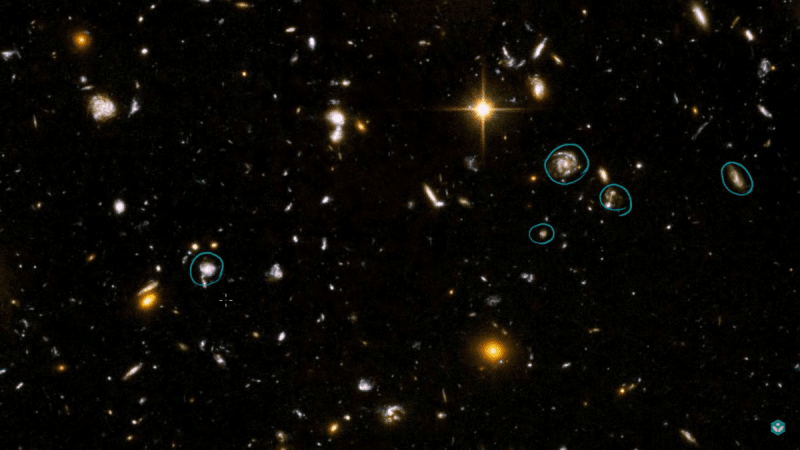Timothy Hamilton of Shawnee State University in Portsmouth and his team have cracked the enigma behind the Hubble telescope's twin galaxy picture. They accomplished this using gravitational lensing.
In 2013, he noticed two brilliant, straight objects that seemed to be mirror replicas of one another. A second strange object was near. They discovered them accidentally while surveying a group of quasars, the flaming centres of active galaxies, with Hubble.

The weird objects are made up of two galactic bulges and at least three roughly parallel divided streaks. Hamilton and Richard Griffiths team of the University of Hawaii at Hilo, were ultimately able to piece together all of the data necessary to solve the mystery.
A perfect alignment of a background galaxy and a foreground galaxy cluster creates twin magnified replicas of the same distant galaxy image. The background galaxy spans a ripple in the fabric of space. When light from a distant galaxy flows through the cluster along with this ripple, it produces two mirror images and a third one off to the side.
"My initial idea was that they were galaxies colliding with tidally extending arms," Hamilton explained. "It didn't fit really well, but I was at a loss for words."
New technique
Griffiths consulted gravitational lensing specialist Jenny Wagner of Heidelberg University. In order to determine how clumpy or not dark matter can be at these places, Wagner says two mirror pictures are sufficient. "No lens models are used here. We merely take the observables of the various pictures and their transformation. Our technique folds them into one another. This tells us how smooth the dark matter must be in these two places."
Griffth says, "We know its matter, but we don't know what it is." So we have no idea. We only know it has mass and is gravitationally bound. What the particle is, tells us about its size and clumping/smoothness. He claims that the smaller the dark matter clusters, the more massive the particles.
What they discoveries through gravitational lensing
Microlensing revealed an ice ball planet. It has Earth's mass and orbits its star at the same distance as we do. Because its star is so dim, the planet may be too cold to support life.

"This 'iceball' planet is the lightest ever discovered by microlensing." Scientists are really not certain if it's a star at all. It might be a brown dwarf, a star-like entity whose core is too cool for nuclear fusion.
Another instance utilized weak gravitational lensing to map galaxy distribution on the biggest scales in the cosmos. About 85% of the universe's matter is dark matter, whose composition is unknown.
Gravitational lensing of distant galaxies by dark matter haloes is a valuable tool for studying dark matter dispersion. Strong gravitational lensing produces severely distorted, enlarged, and even numerous pictures of a specific source. Mild lensing produces slightly warped but consistently deformed background galaxies that can restrict the distribution of dark matter inside clusters.














